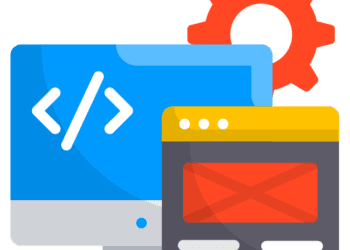The Token Economy: The Hybrid Approach to AI Infrastructure?
AI is transforming enterprises at an astonishing rate, driving data center expansions, new edge computing deployments, and a reevaluation of how best to secure the horsepower for training and inference. One question remains: Should enterprises pre-purchase large AI inference clusters to handle future demand—or is that strategy premature, given ongoing innovations like DeepSeek? In this blog post, we’ll explore why on-premises certainty still holds appeal, what risks come with locking in expensive hardware too early, and how token-based consumption can offer a more flexible middle ground. We’ll also consider how these strategies play out both at the edge and within centralized data centers.
On-Prem vs. Cloud: The Certainty Factor
There’s an undeniable draw to on-premises hardware for enterprises handling massive and continual AI workloads. In-house servers can:
- Guarantee predictable performance – You’re not competing for compute resources with other cloud tenants.
- Maintain strict security controls – Data never leaves your corporate environment, which can be a regulatory requirement in certain industries.
- Mitigate fluctuating costs – While there’s a large capital outlay upfront, you avoid ongoing variable cloud fees that can spike with usage.
In AI, these same benefits apply to training and inference. If your business runs large-scale models around the clock, you can make a solid case for dedicated infrastructure. However, many organizations have more sporadic or evolving AI needs, which introduces risk when locking into on-prem hardware.
For training, access to power and cooling is very much a concern. However, if the primary use case of AI is for inferencing, innovations in DeepSeek point to the use of air-cooled systems similar to much of the existing enterprise data center.
The Risk of Premature Pre-Purchasing
Despite on-premises advantages, it’s worth pausing before pulling the trigger on significant AI hardware investments—especially for inference. Here’s why:
- Rapid Innovation Curve – Solutions like DeepSeek promise new optimization levels for running AI workloads. The field is moving at breakneck speed; the hardware you buy today could become outmoded in a year if a major breakthrough improves performance or efficiency.
- Evolving Workloads – AI projects often start small and scale up—or pivot entirely—over time. When you pre-purchase a large inference cluster, you’re betting on a specific usage profile. If your needs shift, you could end up with overprovisioned equipment gathering dust.
- Opportunity Cost – Significant capital spent on hardware is capital not spent on data science talent, advanced analytics software, or new product development. Especially when you’re not entirely sure of the scale you’ll need, it can be more prudent to keep your options open.
To help mitigate these risks adopt tighter return on investment (ROI) measurements and shorter depreciation schedules vs traditional data center assets. Also, consider the impact of the resulting rapid refresh schedules on your resources.
Token-Based Consumption: A Flexible Alternative
A key challenge for enterprises is how to combine on-prem certainty with the elasticity typically associated with the cloud. One emerging solution is token-based consumption, where you can deploy hardware on-premises (or at the edge) but pay for usage in more granular chunks. It works like this:
- Token Allocation: Instead of buying an entire rack of inference chips outright, you purchase a pool of “tokens” that represent computational capacity or runtime hours.
- Real-Time Tracking: Each time you run an inference (or a set of inferences), tokens are deducted from your balance. This ensures you only pay for what you use.
- Scalability: When your usage spikes—perhaps you’re rolling out a new AI-driven product recommendation engine—you can consume more tokens. If usage dips, your tokens remain until you need them again.
- Technology Refresh: Because you haven’t purchased the underlying hardware outright, vendors often allow you to refresh or upgrade your equipment when newer technology becomes available, often as part of the token contract.
Token-based consumption essentially marries some of the certainties of on-prem infrastructure (location, security, predictable performance) with the flexibility and scalability of cloud-like pay-as-you-go economics.
Note: We aren’t aware of any major OEM vendors offering a token-based consumption model for on-premises AI.
Potential Downsides of Token-Based Consumption
- Vendor Lock-In – Since you’re relying on a specific vendor’s token model and hardware, you might find it difficult or expensive to switch providers.
- Contract Complexity – Token-based arrangements can be more complex than traditional one-time purchases or cloud pay-as-you-go models. Understanding how tokens are allocated, carried over, or expire can be an administrative burden.
- Unclear Cost Benefits – Depending on usage patterns, token-based consumption might end up costing more per unit of compute, especially if you don’t fully utilize your tokens.
- Limited Edge Offerings – While token-based consumption can work well in a data center context, it’s far less common at the edge, where hardware is often smaller and more specialized. The logistical and connectivity challenges of edge deployments mean that real-time token tracking, provisioning, and vendor updates may not be as straightforward.
For now, token-based consumption remains more of a data center strategy; many edge environments don’t yet support such models. If your organization heavily relies on edge computing, you might find that token-based consumption simply isn’t an option in the near term.
Edge vs. Data Center: Different Realities
Edge Inference
For use cases like real-time analytics on factory floors, retail stores, or autonomous vehicles, the edge is where data is generated and needs to be acted upon quickly. But because edge deployments often have:
- Smaller, low-power devices
- Harder-to-upgrade hardware
- Occasional connectivity or capacity constraints
It’s less likely you’ll see a token-based model for the edge anytime soon. Each edge device typically has to be self-sufficient, and relying on a cloud-based token ledger or real-time usage tracking can complicate matters.
Data Center Inference
When dealing with large or pooled datasets—customer insights, fraud detection, complex model serving—data center infrastructure is essential. Token-based models can offer the elasticity you need without the ongoing unpredictability of cloud bills. But remember, the token approach isn’t universally cheaper or simpler than just paying for hardware or the cloud outright. You’ll need to model your usage carefully.
Charting a Path Forward
- Assess Your Workload: Understand how consistent and critical your AI workloads are. If they’re intermittent or still in flux, tying up capital in hardware might not be your best bet.
- Stay Informed on AI Optimizations: Keep a close eye on emerging solutions like DeepSeek. The AI hardware and software optimization space is extremely dynamic, and waiting even a few months could lead to significantly better performance-per-dollar.
- Consider Hybrid Models: If you want the best of both worlds, combine minimal on-prem capacity (for guaranteed performance and data security) with cloud or token-based expansions to handle surges.
- Token-Based Pilots: Many AI vendors now offer usage-based or token-based models for inference. Explore pilot programs that let you test performance and cost before committing fully.
Final Thoughts
Yes, there is certainty in owning your hardware—knowing exactly how much compute you can tap into without surprise bills or conflicting priorities. But certainty can come at a cost, especially if AI innovations rapidly outpace your infrastructure. For most enterprises, the middle ground of token-based consumption may strike the right balance: deploying hardware where it’s most needed (edge or data center), while paying for capacity only as it’s used.
Ultimately, the decisions you make today about AI infrastructure should serve not just current applications, but also leave the door open for the next wave of advancements. By avoiding premature pre-purchases and exploring flexible consumption models, you can keep your AI initiatives agile, cost-effective, and primed for whatever breakthroughs come next.
Have you experimented with token-based consumption or found a different approach for managing AI inference costs? Let us know in the comments how you’re navigating this rapidly evolving landscape!
Share This Story, Choose Your Platform!

Keith Townsend is a seasoned technology leader and Chief Technology Advisor at Futurum Group, specializing in IT infrastructure, cloud technologies, and AI. With expertise spanning cloud, virtualization, networking, and storage, Keith has been a trusted partner in transforming IT operations across industries, including pharmaceuticals, manufacturing, government, software, and financial services.
Keith’s career highlights include leading global initiatives to consolidate multiple data centers, unify disparate IT operations, and modernize mission-critical platforms for “three-letter” federal agencies. His ability to align complex technology solutions with business objectives has made him a sought-after advisor for organizations navigating digital transformation.
A recognized voice in the industry, Keith combines his deep infrastructure knowledge with AI expertise to help enterprises integrate machine learning and AI-driven solutions into their IT strategies. His leadership has extended to designing scalable architectures that support advanced analytics and automation, empowering businesses to unlock new efficiencies and capabilities.
Whether guiding data center modernization, deploying AI solutions, or advising on cloud strategies, Keith brings a unique blend of technical depth and strategic insight to every project.




